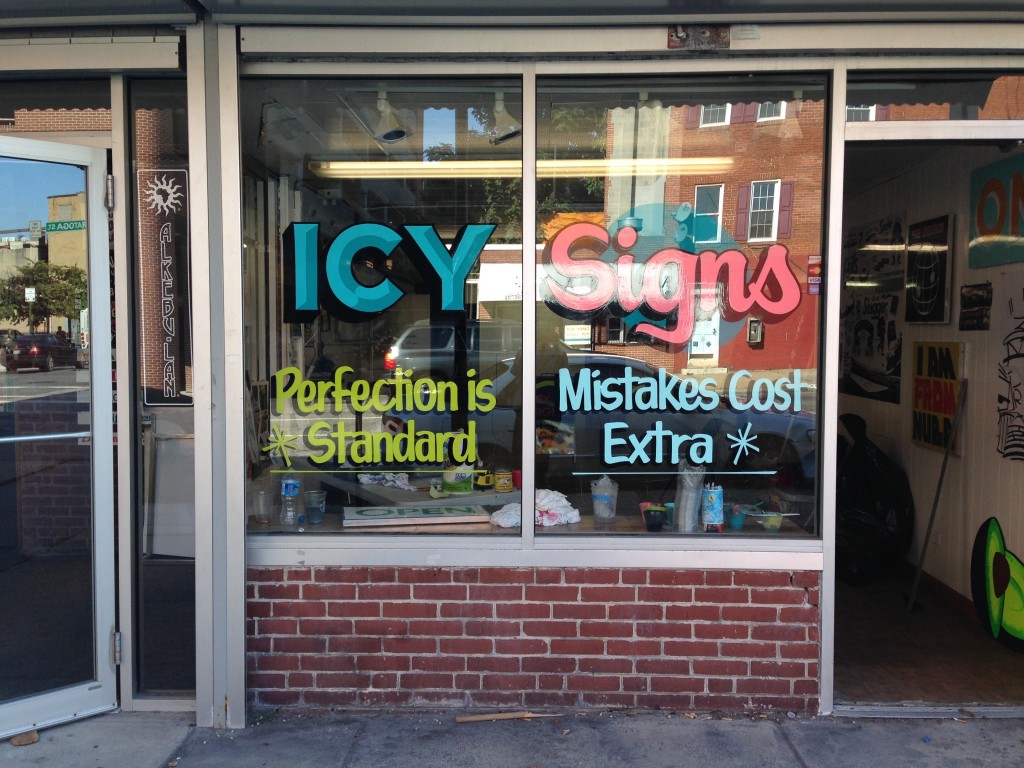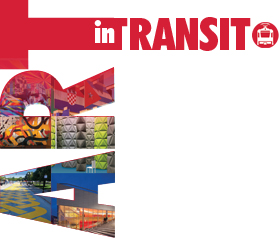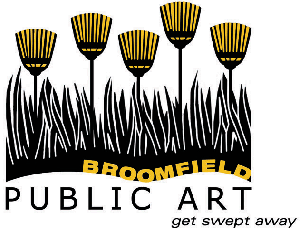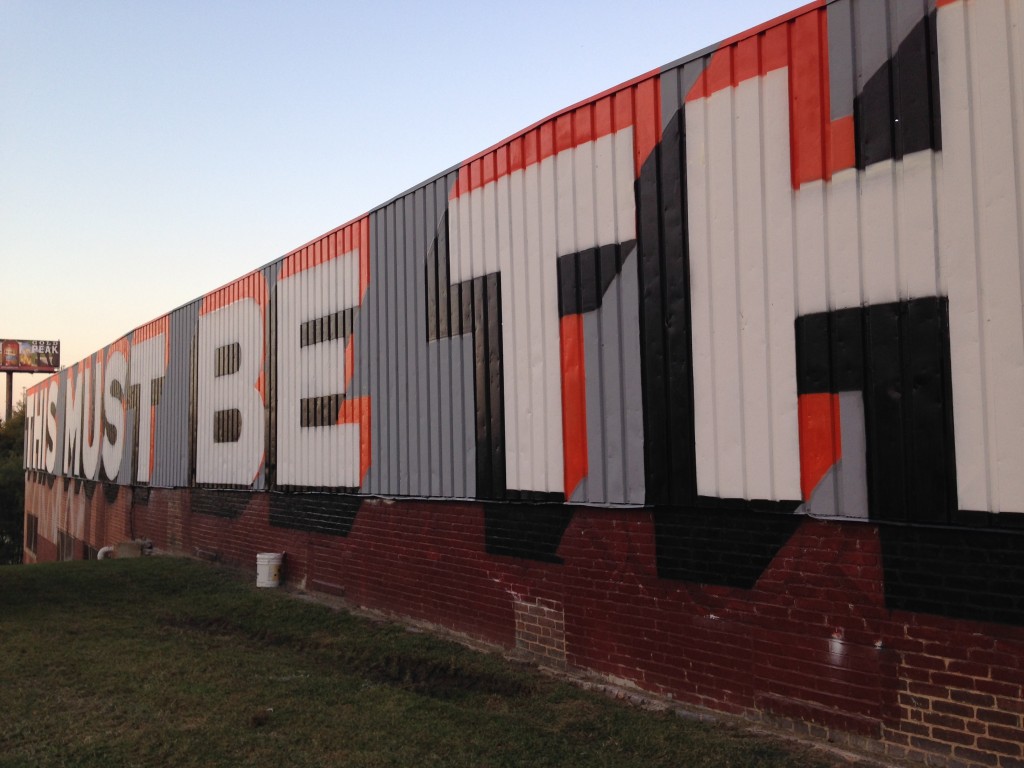Public Art Projects for the Future Maryland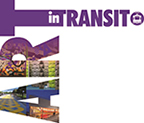
Purple Line
Issue Date: September 16, 2014
1. INTRODUCTION
1.1. Overview of the Opportunity
The Maryland Transit Administration (MTA) is seeking artwork for projects integrated into the design and infrastructure of the future Purple Line transit corridor in suburban Washington, D.C. This is a call to artists who wish to be considered for this work. This call is open to artists from a broad range of media, and will be used to generate pools of artists who could be selected to compete for specific projects in the future.
The Purple Line is a new, 16-mile-long light-rail line extending from Bethesda in Montgomery County to New Carrollton in Prince George’s County. Art opportunities anticipated relate to stations (underground, surface and elevated) as well as infrastructure elements between the stations. Construction of the Purple Line is expected to begin in 2015 and end in 2020. For more information about the project visit: www.PurpleLineMD.com.
This Call to Artists / Request for Qualifications (RFQ) is being issued by the General Engineering Consultant (GEC), who is contracted to provide planning, engineering and design services for the Purple Line on behalf of the MTA. Ultimately, final design, construction and operation services will be contracted to a public-private partnership which, after award, will become the Soliciting Organization for the Art‑in‑Transit Program and which will use the artist pools developed by this process to issue solicitations for specific project opportunities.
1.2. Description of the Project
The Purple Line will offer a reliable system of east–west transit in the Maryland suburbs of Washington, D.C., providing direct connections between major economic centers such as Bethesda, Silver Spring, the University of Maryland College Park and New Carrollton. It will also link the Metrorail Red, Green and Orange Lines, as well as MARC commuter rail, Amtrak and local bus services. Most of the route will involve a dedicated right of way, on surface, aerial bridge and tunnel, and some segments will share right-of-way with traffic. Twenty-one stations will be located along the light-rail line.
The Purple Line follows a circumferential route intersecting with numerous arterial roadways and rail lines that have anchored urban growth leading outward from the core of Washington. As a result, the Purple Line uniquely connects the first-ring suburbs that have developed along these transportation corridors over the last century, and the diverse communities and socio-economic groups that have settled along them. In this way, the Purple Line experience is one of a journey that offers a unique, cross-sectional view of the diversity of Montgomery and Prince George’s Counties.
1.3. Art-in-Transit Mission
The mission of the Purple Line Art-in-Transit Program is:
• To incorporate artwork that makes the light-rail system distinct in its design and artistic impact, encourages civic pride, and serves as a positive symbol for the communities it passes through and connects.
• To enrich the aesthetics of the light-rail system, not to serve as a replacement for good station design and urban design.
• To make connections to communities and support neighborhood identities.
• To be accomplished through a fair and equitable process.
1.4. Artist Opportunities
Specific projects and budgets have not been announced. Possible artist opportunities include: fences and railings, ground planes and plazas, feature walls, retaining walls, light installations, passive water features, enhancements for bridges, tunnel portals, wayfinding pylons, and the surfaces of station canopies and windscreens. In addition, artists may be asked to work on corridor-wide opportunities such as color strategies, a text-based installation and interpretive displays. Artists may be invited to work on design, fabrication and/or installation phases of these opportunities.
2. CALL TO ARTISTS / REQUEST FOR QUALIFICATIONS (RFQ) PHASE
2.1. Overview of the Opportunity
Artist selection for Purple Line Art‑in‑Transit opportunities will be a two-phase process: “Call to Artists / Request for Qualifications (RFQ)” and “Procurement”.
Call to Artists / RFQ Phase
This Call to Artists / Request for Qualifications represents the first phase. Its purpose is to generate lists of qualified artists, working in a variety of media, who may be invited at a later date to create integrated public artworks for Purple Line stations and connecting infrastructure. A Selection Panel will meet this fall to review the submissions and generate lists of artists who may be invited to take part in the Procurement phase.
Procurement Phase
Subsequent to this phase, the Soliciting Organization will determine the specific project opportunities available under the Purple Line Art‑in‑Transit Program, as well as budgets and timelines. For each of the identified opportunities, the Soliciting Organization will conduct a competitive artist selection process. The Soliciting Organization will use the artist pools generated in this phase to identify a small number of artists who may be invited to compete for that opportunity. The final artist selection will be made through a competitive process based on interviews and/or proposals.
This is the only open call that will be issued for the Purple Line. All artists interested in being considered for opportunities on the Purple Line must respond to this Call to Artists / RFQ. Artists who applied for the Baltimore Red Line must respond to this Call to Artists / RFQ to be considered for the Maryland Purple Line.
2.2. Artist Pools
Specifically, the Art-in-Transit Program is seeking artists with experience and qualifications in the following categories:
• Terrazzo, concrete, inlays or similar media suitable for floor surfaces
• Murals, mosaics, light, metalwork, ceramic tiles, form-liners or similar media suitable for vertical surfaces
• Metalwork for fences, grates and similar features
• Lighting effects for walls
• Urban environmental artworks, particularly related to stormwater management
• Posters and graphic projects
• Community-based interpretive projects
• Photography
• Color palettes for complex public space and infrastructure systems
• Two-dimensional imagery suitable for incorporation into a series of glass interlayers
• Text-based narrative works that weave throughout the stations and infrastructure
• Three-dimensional wayfinding markers at various stations
· Textile Design
The Selection Panel will review submissions in each category according to the general criteria listed in Section 5.2. For each category, the Selection Panel will recommend a pool of artists who can be invited to take part in the Procurement phase of this process and considered for commissions.
2.3. Artist Eligibility
This Call to Artists / RFQ is open to all professional artists or artist teams preferably with public art experience. Artists must be U.S. citizens or have legal working status in the U.S. Local artists are encouraged to apply. Qualified artists will be considered regardless of race, color, religion, creed, national origin, sex, marital status, physical or mental disability, sexual orientation, genetic information or age.
2.4. Special Considerations
Before responding to this Call to Artists / RFQ, artists should carefully consider the following requirements that will be incorporated into the Procurement phase of the selection process. Artists who are invited by the Soliciting Organization to take part in the Procurement phase will be bound by these requirements. Therefore, artists who can demonstrate an ability to meet these criteria in the Call to Artists / RFQ phase of the selection process can improve their likelihood of being included in the Procurement phase of the selection process.
1. Artists should be aware that in the development of their concepts, they must consider approaches that relate to the local community. Artists must be prepared to undertake research, including direct community contact through site visits, to obtain the necessary input. Project budgets will not be adjusted to accommodate travel expenses.
2. Artists should be aware that their work must be able to meet standards of durability and longevity that would be expected for artworks incorporated into demanding public transit environments. Specifically, artists will be expected to work with materials and fabrication processes that will result in a projected useful life of not less than thirty-five years for their projects, assuming normal maintenance.
3. Artists should be aware that the Federal Transit Administration (FTA) requires the following criteria be used when artists are commissioned to create work that is integrated into transit systems:
• Quality. Quality of the art or design.
• Effect. Impact on the public.
• Relationship. Connection to the site or the adjacent community, or both; art that relates, in form or substance, to the cultures, people, natural or built surroundings, or history of the area in which the project is located.
• Suitability. Appropriateness for the site, including safety and scale.
• Resilience. Durability of materials and fabrication.
• Indestructibility. Resistance to vandalism.
• Preservation. Minimum maintenance.
3. PROCUREMENT PHASE
The second phase of the artist selection, the Procurement phase, is expected to follow the process outlined below. Specific details for the Procurement phase are still being developed, but will be included in the artist solicitations.
3.1. Identification of Artist Opportunities Subsequent to this Call to Artists / RFQ phase, the Soliciting Organization will determine the specific artist opportunities that will be available through the Art-in-Transit Program. Please see Section 1.4 for a summary of the potential arts opportunities.
The determination of the specific artist opportunities, as well as their budgets, scopes and schedules, will be based on a range of factors, including availability of funding, construction schedule, and operations and maintenance considerations. Artists may be invited to work on design, fabrication and/or installation phases of the opportunities.
3.2. Solicitation Process
Once the artist opportunities are determined, the Soliciting Organization may issue one or more competitive solicitations to artists who are selected from the artist pools created as an outcome of the Call to Artists / RFQ phase of this process. The solicitations may be issued for individual opportunities or grouped by location and/or type of project (e.g., plazas, retaining walls, canopies). The solicitations may incorporate an interview-based or proposal-based selection process.
The solicitations will describe submission requirements and evaluation criteria, and will include schedules and budgets. Additionally, they will describe scopes of work that will potentially combine elements of design, artist supervision and fabrication in the finalarrangements, depending on the nature of the opportunity.
A Selection Panel will be assembled to identify finalists for each solicitation that is issued. The Selection Panel will be able to draw finalists from any relevant artist pool assembled as an outcome of the Call to Artists / RFQ phase of this process. For example, a selection panel looking for artists to develop a wall treatment may look to artists interested in vertical surfaces, light, posters/graphics and photography.
Finalists will be asked to develop concepts for the projects, and/or take part in an interview process, depending on how the solicitation is structured. Commissions will be awarded on the basis of concepts and/or interviews, references and overall qualifications.
Only artists who have responded to this Call to Artists / RFQ will be eligible for consideration in the Procurement phase of the process.
3.3. Stipends
If the solicitation invites artists to submit proposals, those artists will be paid a stipend of up to $3500 for producing the proposals. Travel to the Maryland area is encouraged to acquire community input as part of preparing a proposal and to present concepts to the selection panel, and in some cases may be a requirement. The stipends will be intended to cover artist costs associated with preparation of proposals, and will be scaled to be commensurate with the scope of the specific project and the requirements of the concept proposals.
If the solicitation invites artists to take part in an interview process only, no stipends will be paid.
4. SUBMITTAL REQUIREMENTS
4.1. General Qualifications must be submitted through the CaFÉ call for entry website:
CaFÉ Purple Line Submission Page
The MTA will reserve the right to reject any or all submission(s), if, in its sole discretion, the submission is in whole or in part incomplete or unresponsive, or because the submission fails to meet the requirements for eligibility set forth in this Call to Artists, or is otherwise determined not to be in the best interest of the MTA.
This is a Request for Qualifications only. Artists should not send proposals.
This is the only open call that will be issued for the Purple Line. All artists interested in being considered for opportunities on the Purple Line must respond to this Call to Artists / RFQ.
4.2. Artist Briefings
The GEC will hold artist briefings at various locations in Montgomery and Prince George’s Counties. The briefings will be announced on the Purple Line Art-In-Transit Page.
4.3. Question and Answer Period
Questions must be submitted via e-mail to: artintransit@purplelinemd.com. No telephone calls, please.
Questions must be submitted no later than Friday, October 31, 2014, at8:00PM in theEasternTimeZone. Time permitting, answers to all substantive questions will be answered so that interested parties will have sufficienttime for the answer to be taken into consideration in preparation of the RFQ.
The Point of Contact shall, in her own discretion, determine whether an answer can be given to submitted questions. Answers will be posted periodically at theCaFÉ website and on thePurple Line Art-In-Transit Page.
4.4. Point of Contact
Artists shall correspond with the GEC regarding the Call to Artists only through the Point of Contact. E-mail inquiries only, please.
Jo Schneider, Art‑in‑Transit Manager, Maryland Purple Line
artintransit@purplelinemd.com
4.5 Submission Deadline
Qualifications must be submitted to the CaFÉ websiteby Friday, November 14, 2014, at8:00PM in the Eastern Time Zone.All elements of a submission must be received by the deadline date and time for the commission to be considered complete.
4.6 Submittal Content
Submissions must include the following:
•Application Form:
Artists must indicate the category, from the list in section 2.2 of this Call to Artists / RFQ, for which they would like to be considered. Artists wishing to be considered for more than one category must submit one application for each category. The categories will be outlined on the application page on the CaFÉ website.
•Portfolio: Work Examples/Images: Up to ten (10) digital file images of completed past artworks that are relevant to the category for which the artist is applying. Digital files must be in JPEG format. Images should be no smaller than 1920 pixels on the longest side; 3MB maximum file size; 72 ppi/dpi).
•Annotated Images List: List each digital image in sequence. Indicate the title of the work, media, dimensions, location, brief description, date of work, project budget and project partners if applicable. For previous public art projects, please list the client organization or agency.
•Resume: Current resume and/or artist’s biographical statement which outlines your experience as a public artist.
•Statement of Interest: Briefly describe your interests and qualifications for the project. In your statement, address the criteria outlined in Section 5.1 – RFQ Evaluation Process.
•Experience in Public Art, Transit-Based Projects, and Community Engagement: Please provide any additional information about your experience working in public art, especially transit-based projects, and in community engagement.
•References: Submit three (3) professional references (commissioning agency or organization, design or arts professional, architect, landscape architect, etc.) that have detailed knowledge of your work and working methods. You must provide name, title and contact information (e-mail and phone) for each reference.
4.7. Special Instructions for Artist Teams If artists are applying as a team, the team should be declared in the Artist Statement, specifying a team leader who will receive notifications, and provide that team leader’s contact information. If applying as a collaborative artist group, name each member of the group and provide resumes for all members of the group.
4.8. Special Instructions for Artists Applying in Multiple Categories Artists who have skills and credentials in more than one category cited in Section 2.2 can be considered for multiple pools.
Artists must upload a separate application for each category, including a separate portfolio that highlights that artist’s experience and proficiency in each category. Artists who upload identical applications and/or portfolios to multiple categories may be considered unresponsive and their submissions to one or all of the categories may be rejected.
4.9. Special Instructions for Artists Seeking to Collaborate with Local Non-Profit Arts Organizations At this phase of artist selection, artists will be evaluated solely according to the criteria outlined in Section 5.2 of this call, “General RFQ Evaluation Criteria for All Categories”. Artists who are advanced to the Procurement phase of artist selection can propose to collaborate with a non-profit arts organization, depending on the nature and scope of the opportunity for which they are being considered.
5. RFQ EVALUATION
PROCESS AND CRITERIA
5.1. RFQ Evaluation Process
A Selection Panel, comprised of art and design professionals, MTA’s GEC and its consultants, and representatives of state and local arts agencies,will review the submissions and select the artists who will be included in the pools to be considered for future commission opportunities.
5.2. General RFQ Evaluation Criteria for All Categories The following criteria will be used to evaluate artists, in the following order of importance, as applicable.
• Artistic originality, excellence and innovation.
• Ability to collaborate with the community, architects, public agencies and other stakeholders.
• Professional experience, and experience working in public art and with FTA criteria commensurate with the category being reviewed.
• Mastery of techniques and materials.
• Familiarity with this geographic region.
• Education and recognition, such as exhibitions, grants and awards.

